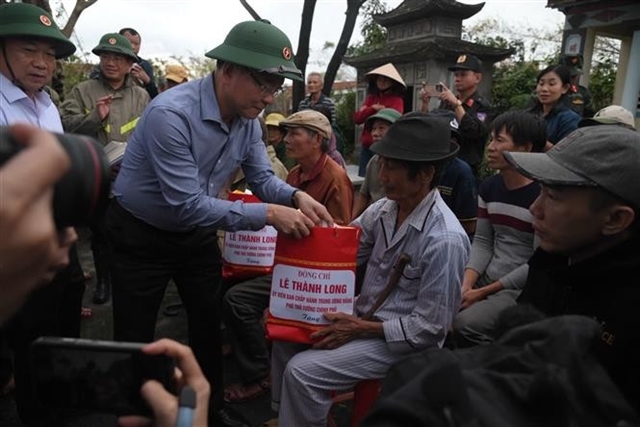 Society
Society

The Ministry of Health (MoH) has issued a list of drugs that can be used for treatment for COVID-19 patients at home.

|
| Health Minister Nguyễn Thanh Long checks medicine packages for COVID outpatients. Photo courtesy of the Ministry of Health. |
HÀ NỘI - The Ministry of Health (MoH) has issued a list of drugs that can be used for treatment for COVID-19 patients at home.
There are seven types of drugs as follows:
- Antipyretics and analgesics: Paracetamol for children in powder or suspension forms with contents of 80mg, 100mg, 150mg or 250mg; and tablets of 250mg and 500mg for adults.
- Electrolyte balance: Oresol, rehydration products and other electrolytes.
- Health and immune supportive products: Multivitamins with one of the ingredients of B1, B6 and B12; vitamin C (may include zinc) and vitamin D.
- Oropharyngeal antiseptics: Sodium chloride (0.9% solution or saline tablets), and other oropharyngeal antiseptics.
- Antiviral drugs used according to clinical research protocol approved by the Ministry of Health or as per leaflets of drugs granted licences by Việt Nam. From August 27, the MoH and the Department of Health of HCM City started to use the antiviral drug - Molnupiravir in the community to treat F0 cases at home.
- Oral-use corticosteroids: Dexamethasone 0.5mg tablet, Methylprednisolone 16mg tablet, and Prednisolone 5mg tablet.
- Oral-used anticoagulants: Rivaroxaban tablet 10mg and Apixaban tablet 2.5mg.
Anti-inflammatory corticosteroids and anticoagulants are mandatorily prescribed for outpatients as per MoH guidelines.
The combination of anti-inflammatory corticosteroids and anticoagulants drugs are only indicated when the patients have any early signs of respiratory failure but have not yet been transferred to medical facilities, and if the patients are not in a group with contraindications to the drug.
Specifically, the signs of respiratory failure are:
- Shortness of breath, or shortness of breath increasing with moving such as standing up and walking around the house, or children with abnormal breathing signs such as wheezing, chest constricted breathing and nasal fluttering.
- Breathing rates: equal to or faster than 21 beats per minute in adults; equal to or faster than 30 beats per minute in children from 5 to 12 years old; and equal to or faster than 40 beats per minutes in children aged 1 to 5 years (for children count breaths over a one minute period when she or he is lying still without crying).
- SpO2 levels equal to or less than 95 per cent (if measurable). When an abnormality is detected, take a second measurement after 30 seconds to a minute. When measuring, keep the same measurement position.
The MoH guidance also reminds doctors to carefully check for any contraindications, and information about the drug-use history of patients to avoid serious drug interactions and side-effects.
Patients or caregivers are advised to be aware of important undesirable effects of the drugs in order to handle usage appropriately. VNS




